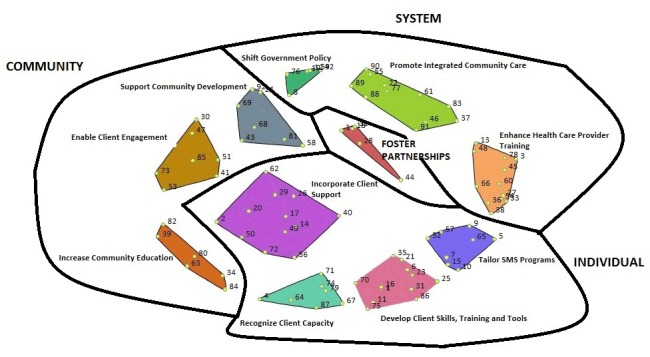Figure 2.

The final 11-cluster solution of the 92 statements generated, grouped by 4 conceptual groupings: 1) fostering partnerships, 2) systems level system (actions implemented by governments, health care systems, nongovernment organizations), 3) community (actions addressed by communities and related organizations), and 4) individual (actions directed toward clients). The black lines represent the conceptual groupings of the 11 clusters.
